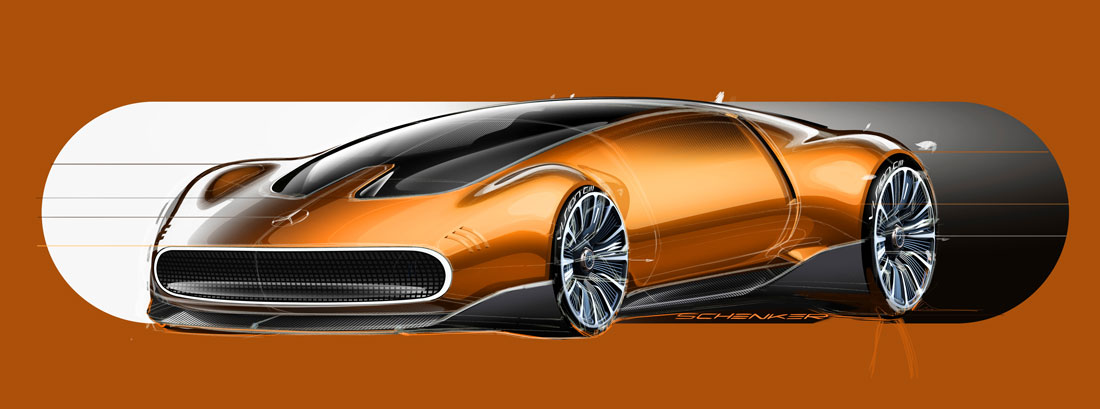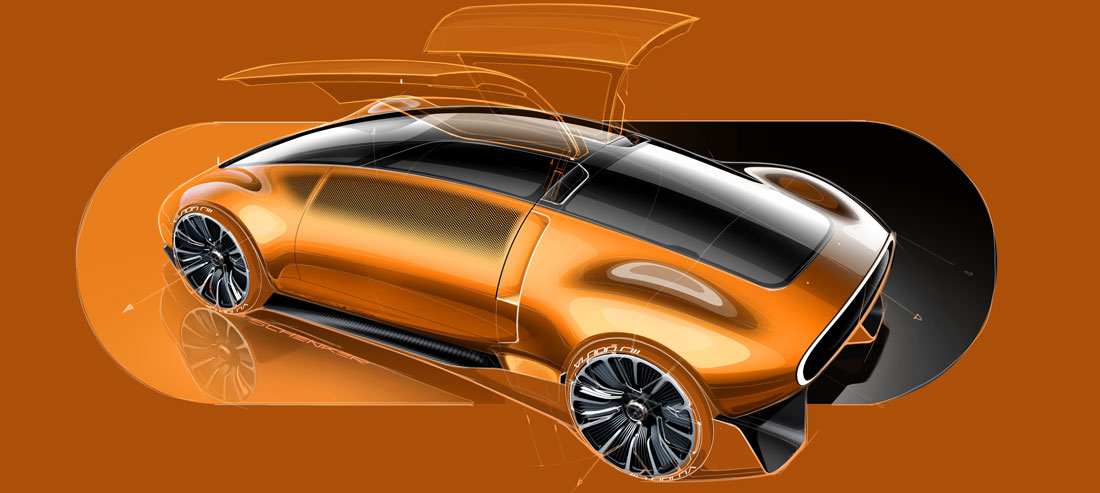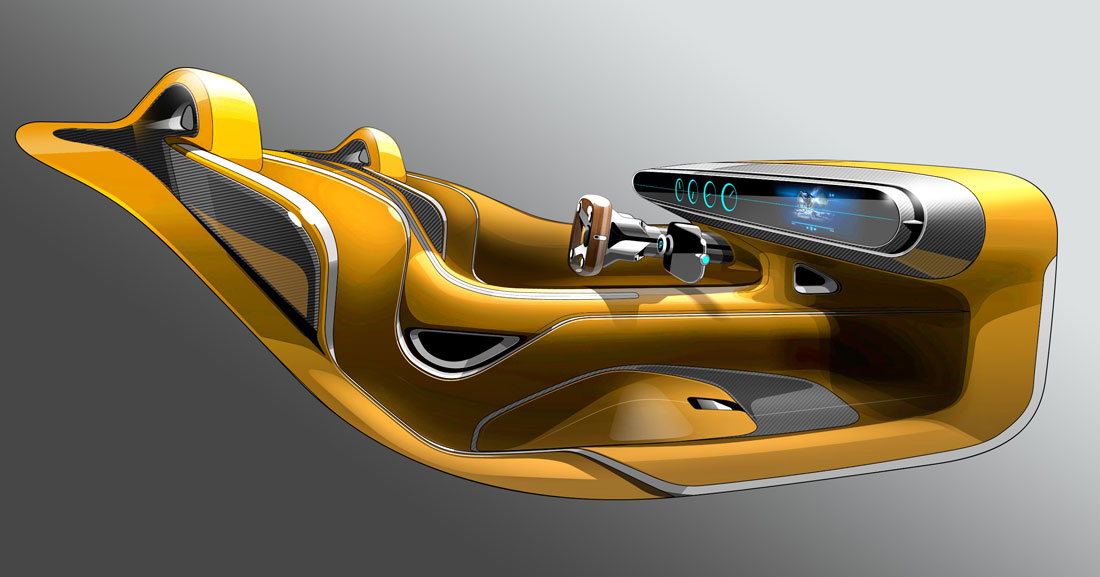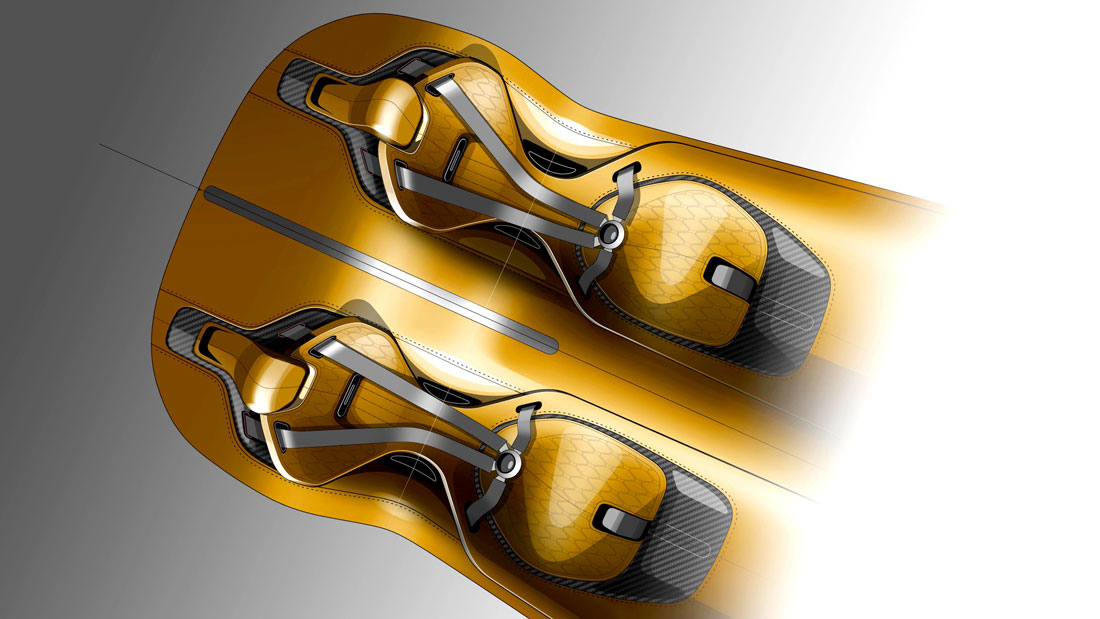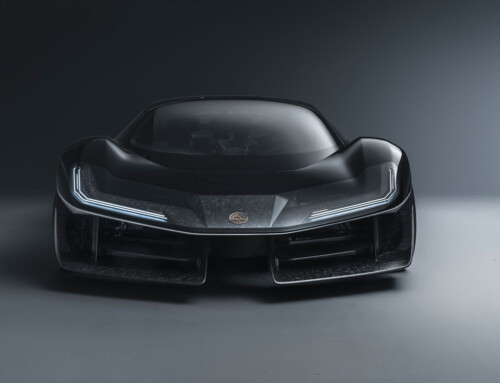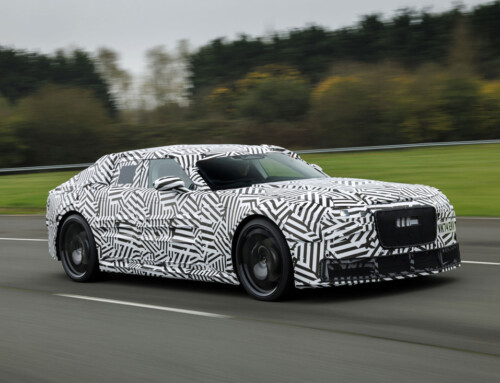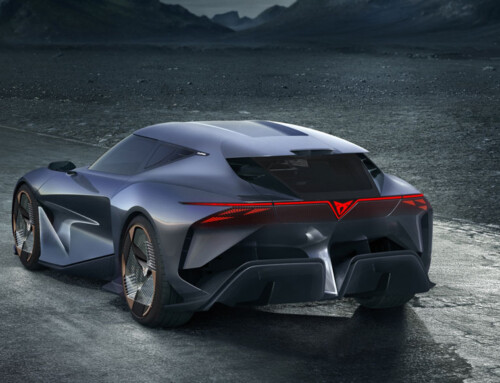Today’s automotive watchwords – efficiency, consumption and sustainability – are clear and recurring, but is there still room for dreams? While most of the dozens of proposals showcased by manufacturers belong to the world of SUVs, many aficionados yearn for a real jaw-dropper. Mercedes’ Vision One-Eleven concept responds to this desire. The recipe contains just a handful of highly impactful ingredients: an eye-catching colour, striking features like gull-wing doors and, inevitable for today, all-electric propulsion technology. “Beneath these breathtaking speedster aesthetics lies a four-wheeled laboratory”, says Gorden Wagener, Mercedes-Benz Group Chief Design Officer.
The ancestor is the C 111
The aesthetic inspiration is rooted in the C 111, the first in a series of experimental cars produced between 1969 and 1979 to test pure forms – design by Bruno Sacco and Josef Gallitzendörfer – and novel engine concepts. An idea that returns 54 years later, dressed in forms that adhere to the styling philosophy Mercedes calls ‘Sensual Purity’ and that offers clean-cut, sexy forms. “Our aim is not to do styling, but to create icons”, explains Gorden Wagener. “This makes the difference between traditional design and luxury. Design icons like the 300 SL and the C 111 are now part of our DNA and were the main inspiration for the styling of the Vision One-Eleven”.
Extremely low
The surprise element comes from its exceptionally clean, pure and, at the same time, muscular proportions. A defining feature is the One Bow Line, a single arched line that starts at the front, extends over the roof and drops gently down to the rear. “By now it is our styling signature: a visible manifestation of aerodynamics. Have you seen how low the car is? There has never been an electric car with such a low stance (1,170 millimetres, ed.)”. Style and technology have merged to create a hypercar that experiments with new technologies: axial-flux motors are much lighter, more compact and more powerful than the radial-flux motors used in almost all electric cars today, and their use has allowed for authentic sports car ground clearance.
The big Pixel panel
The designers have reinterpreted many elements of the C 111 in a futuristic manner. Whereas the front of its forebear was characterised by a closed, plastic, honeycomb structure, on the Vision One-Eleven the panel is an external display with large pixels and round lights. This solution is also found at the rear, where the designers have installed a screen above the diffuser that transmits the lights.
Sustainable interior
Like the exterior, the interior too is a mix of citations from the past and futuristic solutions where colours play a significant part: “After extensive research we decided to use white, which has always been the colour of the future”, explains Wagener. The upholstery is in recycled polyester, and the armrests, sills, centre console and rear luggage shelf (there is also a dedicated set of luggage) are covered in bright orange. The leather was tanned using coffee bean husks, while polished aluminium in the steering wheel spokes and inlaid straps on the armrests accentuate the hi-tech styling.
A bridge between past and future
The seats are particularly spectacular: the cushions have been installed directly on the floor as in Formula 1 cars but, unlike these, the backrest inclination can be adjusted. The pixelated layout of the exterior has also been chosen for the large infotainment display that stretches across the entire width of the dashboard. A minimalism that recalls the solutions adopted for the C 111 in an interplay of shapes and colours that creates a bridge between past and future because, concludes Wagener, “you can’t build a stable tomorrow if you’re not aware of your roots”.
(Full article in A&D no. 264)


